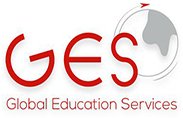“Breaking the Mold: Active Learning Strategies for Enhanced Math Education”
Active learning is a teaching method that encourages students to participate in their own learning process, rather than passively listening to lectures or completing worksheets. In mathematics, this approach can help students build a deeper understanding of mathematical concepts and develop problem-solving skills. Here are some ways to apply active learning in math teaching:
Collaborative problem-solving: Grouping students into teams and assigning them mathematical problems to solve together can help them learn from each other and build their confidence in problem-solving. This can also provide opportunities for students to share their ideas, ask questions, and learn from their peers.
Inquiry-based learning: Encouraging students to ask questions, make predictions, and conduct experiments can help them develop their own understanding of mathematical concepts. This approach can also help students build critical thinking and problem-solving skills, as they learn to ask questions, gather information, and make conclusions.
Hands-on activities: Engaging students in hands-on activities, such as building models or using manipulatives, can help them develop a concrete understanding of mathematical concepts. This approach can also make math more engaging and relevant to students, and can help them build spatial reasoning skills.
Class discussions: Encouraging students to participate in class discussions can help them understand mathematical concepts in a deeper and more meaningful way. This can also provide opportunities for students to share their ideas, ask questions, and learn from their peers.
Self-paced learning: Allowing students to work at their own pace can help them build their confidence in their abilities and allow them to explore mathematical concepts in greater depth. This approach can also help students develop self-directed learning skills, as they learn to set goals, track their progress, and make decisions about their own learning.
Active learning can be an effective way to teach mathematics and help students build a deeper understanding of mathematical concepts. By engaging students in collaborative problem-solving, inquiry-based learning, hands-on activities, class discussions, and self-paced learning, teachers can help students develop critical thinking and problem-solving skills, as well as build their confidence in their abilities.
